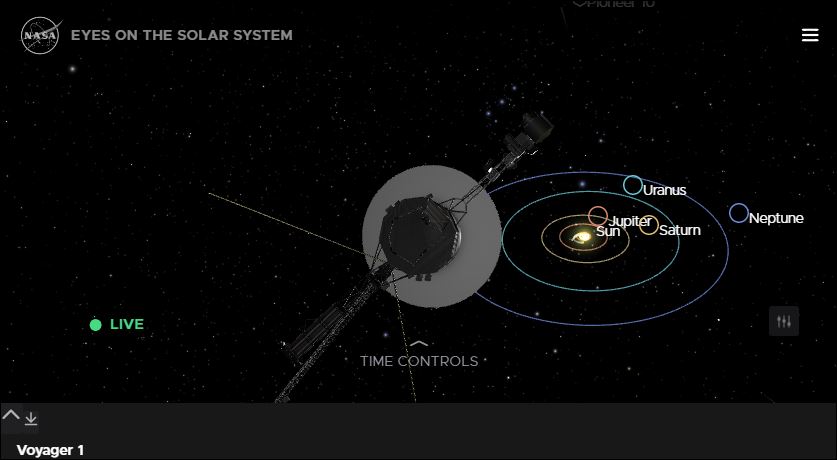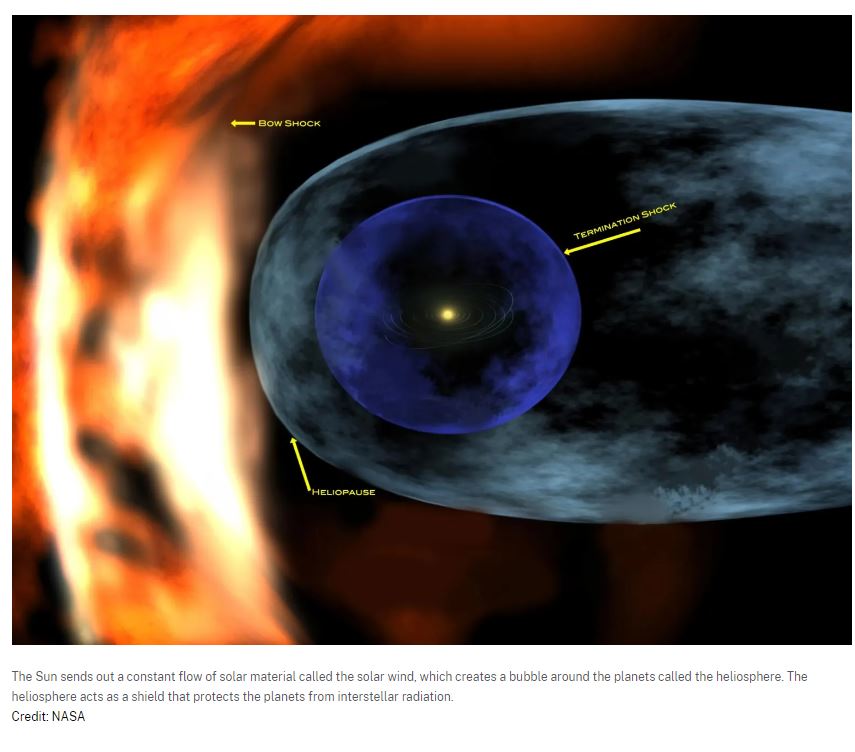This article was revised Rosh Chodesh Elul 5785.

This past year has been marked by a series of profound scientific data transmissions from the aging but resilient Voyager 1 spacecraft. The data from this mission has challenged fundamental, long-held scientific theories.
New data from NASA’s Voyager 1 spacecraft has fundamentally reshaped our understanding of the heliopause, the outer edge of our solar system. The findings challenge the long-held view that this boundary is a static, clean barrier, revealing instead that it is a dynamic and energetic transition zone. This new perspective highlights how the heliopause’s complex nature is essential for protecting life on Earth.
Voyager 1 and the Changing Face of the Solar System’s Edge

The Heliopause: A Protective Shield
For decades, scientists theorized that the heliopause was a clear-cut boundary where the Sun’s constant stream of charged particles, the solar wind, simply ended. However, Voyager 1, having been at the forefront of exploring this boundary since its launch in 1977, has uncovered two key phenomena that contradict this model and reveal the heliopause’s true nature as a protective shield.
First, the spacecraft detected a region of unexpectedly hot plasma just beyond the heliopause, which has been informally named the “wall of fire.” This superheated plasma, reaching temperatures of up to 50,000 Kelvin, is far hotter than what was previously expected. This discovery points to a significant energy transfer happening at this boundary.
Second, Voyager 1’s magnetic field data provides the likely explanation for this thermal anomaly. The data shows that the magnetic fields of interstellar space are not separate from but are actually connected to the Sun’s magnetic field at the heliopause. This observation directly contradicts the assumption that the heliopause is an impenetrable boundary. This connection allows for a well-understood process called magnetic reconnection, where magnetic field lines from different domains break and reconnect, releasing immense amounts of stored energy. This energy, in turn, heats the surrounding plasma, creating the “wall of fire.”
A Dynamic Boundary for Life
The discovery that the heliopause is a dynamic zone of magnetic reconnection and energy transfer has significant implications for life on Earth. Rather than being a passive boundary, this energized region acts as a powerful barrier that deflects and filters dangerous interstellar radiation from our solar system. This constant magnetic interaction and energy transfer effectively dissipate the destructive energy of cosmic rays and other high-energy particles before they can reach the inner solar system, including Earth.
This revised understanding of the heliopause as an active, filtering boundary reinforces its critical role in making our corner of the galaxy a safer place for life to thrive. It shows that the Sun’s protective influence, through its complex magnetic field, extends much farther and more dynamically than previously thought, ensuring the security of our planetary neighborhood.
The “Wall of Fire”: A Thermal Anomaly and its Implications
After a multi-month communication issue, engineers were able to restore two of Voyager 1’s four science instruments in May 2025, allowing the spacecraft to resume transmitting useful data. This renewed stream of information has provided an unprecedented look at the region just beyond the heliopause. The data has revealed a region of unexpectedly hot plasma, which has been informally named the “wall of fire”. Measurements from the spacecraft indicate that this thin shell of superheated plasma, detected near the heliopause, reaches temperatures of 30,000–50,000 Kelvin (approximately 54,000 to 90,000 degrees Fahrenheit).
This finding is a significant thermal anomaly, as these temperatures are “far hotter than expected” based on the established models. It is important to clarify that this is not “fire” in the traditional sense, as the particles are highly energetic but extremely spread out. This finding indicates an immense, localized energy transfer is occurring at this boundary, a phenomenon that was not accounted for in previous theoretical frameworks.
Appendix
Quote from the article: What Benefit Could G-d Have In Creating and Destroying Worlds Previous to the Six Days of Creation?
I have also read an entirely different justification for G-d’s creation and destruction of previous worlds that states the following. We appreciate in a better way, the good that we have, when we first realize, the chaos, fault, and destruction that could have been. Therefore, the created and destroyed worlds that came before ours, were first made, to give us a greater appreciation of the good we indeed possess and to counter the temptation towards haughtiness and denial of G-d that often comes with material success (see Dvarim/Deuteronomy 8:11-18 as an example). The more mankind achieves greater material advances than ever before, the more mankind needs reminders of his ultimate vulnerability via new evidence coming to light for past worlds that were ultimately destroyed.
